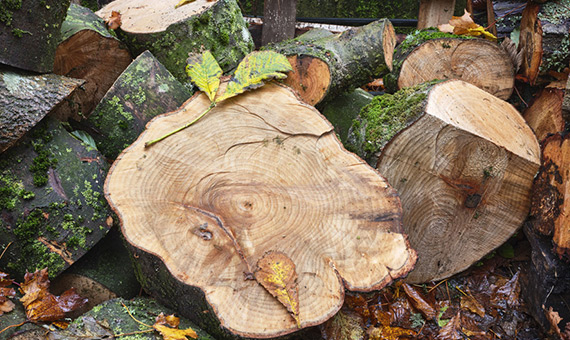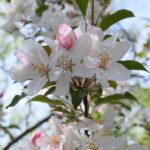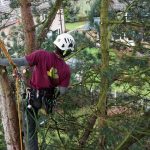Ash trees are incredibly popular here in the UK. They grow naturally in most forested areas and are known to contribute heavily to their ecosystems by providing a rich layer of humus. This humus, formed from dropped leaves, twigs and other flora, provides the makeup for a healthy, happy and aerated soil below. Ash’s ability to contribute to its surroundings has seen it become a firm favourite of gardeners and conservationists alike.
Culturally, however, the ash has made a name for itself in British history. Its links with Viking lore, as well as with Robin Hood-era protagonists in some of our favourite childhood literature, is a testament to the ash tree’s role in the history of the UK. It was alarming to read reports in 2012 of a fungal infection in the UK’s population of ash known as ‘ash dieback’.
Much has been reported of ash dieback in the news since then, so we thought we’d provide some useful information about ash dieback, also known as ‘Hymenoscyphus fraxineus’ and what you can do to spot it on your land.
But, first things first, what exactly is ash dieback?
Find out more with Broadleaf Tree Surgery, expert arborists based in Kent.
Ash Dieback: The Figures
The government reports that Ash trees make up between 12% and 16% of all tree coverage in the United Kingdom. The species is a naturalised species originating in mainland Europe. It made its way onto the shores of the United Kingdom during the last ice age.
This fungus was first spotted in the E.U. in Poland in 1992 but has since made its way across westerly winds to the UK shores, decimating our population of ash and causing national concern. The fungus is likely going to kill off a minimum of 50% of all ash trees here in the UK over the next few years. A good estimate for the number of ash trees in the UK has been placed at around 125,000,000, which means that we could lose anywhere between 50,000,000 and 75,000,000 trees in the UK by 2030.
These are conservative estimates. Some less positive estimates see a total destruction of ash species here in the UK before 2030 as a result of dieback. So how can we identify ash dieback in our trees at home, and what can we learn about its causes?
What Causes Ash Dieback?
The spores of the fungus Hymenoscyphus fraxineus land on healthy leaves over the summer months through westerly air currents. This causes small lesions. The infection continues through the leaves into branches and then into the trunk which then causes larger diamond-shaped lesions to grow.
These larger, diamond-shaped lesions cut off the nutrients from the leaves to the trunk, causing the inevitable death of the ash tree itself.
Once the smaller branches have been completely cut-off from the main trunk of the tree, they fall on the ground and stay dormant over the winter months. Once spring nears, the fungus blooms into white growths amongst the dead branches on the ground. The wind carries spores from this fungus and the cycle continues.
What Are The Symptoms Of Ash Dieback?
These are just some of the symptoms and signs that your ash tree might have ash dieback:
- Leaves with dark patches during the summer months.
- Tip dieback in mid-summer usually to the next growth point.
- Wilting and early leaf drop of leaves. This results in a decreased size of the overall canopy.
- Epicormic growth from beneath the canopy or buds that have activated early. This is a common sign of stress in trees.
- Lesions on the bark which are dark brown in colour and form on the branches and trunk of the tree.
- White fungal growths on dead twigs and branches are found on the ground in the tree’s dormant period.
If you are unsure about spotting signs of ash dieback, it is advisable to contact an arborist to best assess the situation. If you are in the Kent area, then get in touch with our specialist team at Broadleaf Tree Surgery for an ash dieback consultation today. Spotting signs of ash dieback from other, less concerning issues can be tricky, so it is always advisable to seek professional advice to be certain.
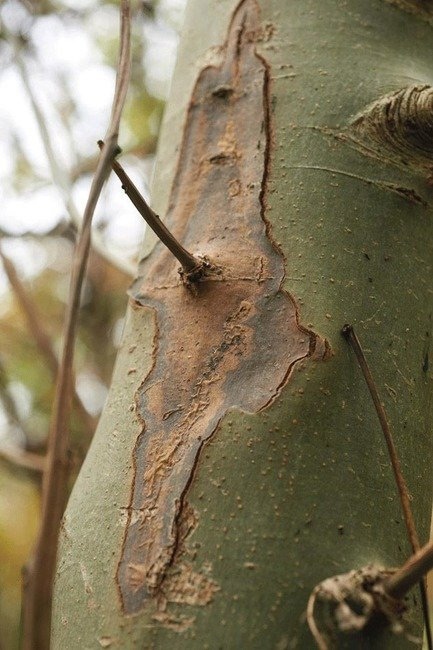
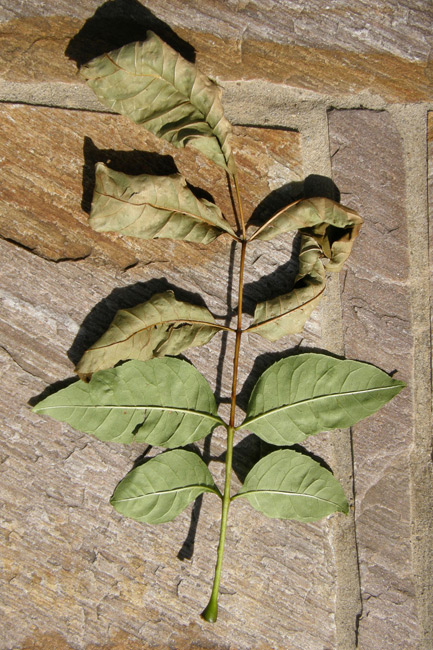

What To Do About Ash Dieback
Proactive Methods to Prevent Ash Dieback
Promoting diversity is key to moving forward with ash dieback in the UK. Since this fungus only infects trees from the ash genus, it would be devastating to a forest predominantly containing ash.
If you are looking to conserve an ash tree on your property, or you are concerned about its well-being, having other types of trees planted nearby would be beneficial. This extends to storing ashwood for lumber or firewood, too. Keeping a diverse woodpile could prevent dormant fungi from entering your property and spreading.
Contamination is also an area of concern. As tree surgeons, we make sure to wash all our tools and equipment if we have been working with ash as a preventative measure. This might seem excessive for the common gardener, but if you are chopping wood in your garden, it would be advisable to rinse your tools with hot soapy water between uses.
Reactive Dieback Prevention Methods
If you think you have found symptoms of ash dieback in a tree on your land then you should make a conservative effort to prevent its spread. Most of the time, this means a full tree removal. Most families become accustomed to trees on their property and it can be hard to chop a tree down. Unfortunately, with dieback, there is little other option. In the early days of this dieback pandemic, it was believed that simply removing the dead wood on infected branches would be sufficient to save the tree. This does however open up further entranceways for the fungus which only delays the tree’s demise.
Genome Sequencing To Prevent Ash Dieback
We are in the early stages of the pandemic and the full scale of the effect of the disease is yet to be fully understood. Scientists have found that some trees are tolerant to ash dieback through efforts to sequence the tree’s genome. This could mean that we might see Ash trees making a comeback as the tolerant trees produce more offspring. This is likely to take many decades though. It is also dependent on several separate factors including the volume of fungal spores in the atmosphere and the genetics of the tolerant trees.
The Forestry Commission here in the UK has issued a tool called ‘Tree Alert’ to help log events of Hymenoscyphus fraxineus across mainland Britain.
Preventing Ash Dieback With Broadleaf Tree Surgery
When we work on trees, we need the trees themselves to be structurally sound. As ash dieback affects the very structure of the tree and often causes the tree’s heartwood to become brittle. This makes the tree itself difficult to climb and dismantle safely. It is therefore important to act swiftly if you think you have a tree which is showing signs of ash dieback and contact Broadleaf Tree Surgeons for a consultation.
The quicker we can assess the health of the trees on your property then the quicker we can react. Leaving it too late can mean any necessary surgery carried out on your land might need extra labour or technical support such as a cherry picker. The cost-effective approach in this case, as it usually is with tree surgery, is the proactive approach.

